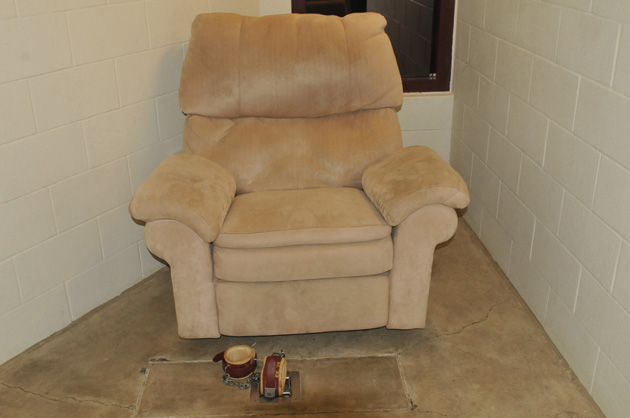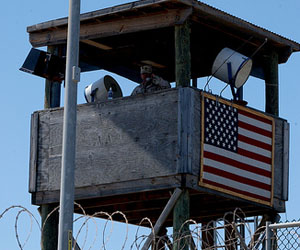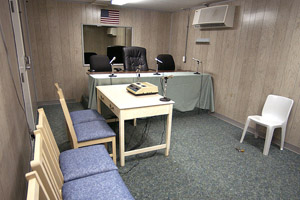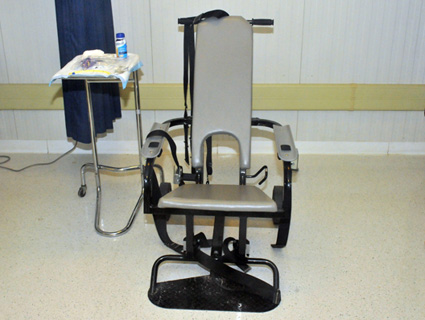
A "feeding chair" in the Guantanamo medical wing where hunger-striking detainees are force fed.Sgt. Brian Godette, Army 138th Public Affairs Detachment
For more than two weeks, 100 detainees at the Guantanamo Bay Naval Base in Cuba have been on hunger strike to protest conditions at the prison and their indefinite confinement. First denied and downplayed by the military, the strike has now become a full-blown emergency, as the Huffington Post‘s Ryan J. Reilly reports:
Twenty-three detainees are currently being force-fed. At least twice a day, guards in riot gear tie each detainee to a chair or bed, and medical personnel force a tube up his nose and down his throat, and pump a can of Ensure or other dietary supplement into his stomach. There are so many detainees being force-fed that Guantanamo’s medical personnel are working around the clock to keep up with the demand, and approximately 40 additional medical personnel just arrived in Guantanamo to help deal with the growing crisis.
Though they do not show any of these frantic scenes, recently released military photos offer a window onto how Guantanamo has been dealing with the unprecedented protest: A “feeding chair” where detainees are force-fed sits next to a tray of feeding tubes and a bottle of butter pecan Ensure; guards deliver meals through “bean holes” in detainees’ cells, only to throw away the uneaten food; hospital beds behind chain-link fences with rings for shackles beside them.
Other images in the series, taken in early April by Sgt. Brian Godette of the Army 138th Public Affairs Detachment, depict scenes from Camps V and VI, where most prisoners are held: a sign asking soldiers to respect praying detainees, a stuffed recliner in the “media room” that looks almost normal until you notice the ankle restraints. Original photo captions are in quotes. (h/t Public Intelligence)
“Feeding chair and [internal] nourishment preparation inside the Joint Medical Group where the detainees receive medical care.”
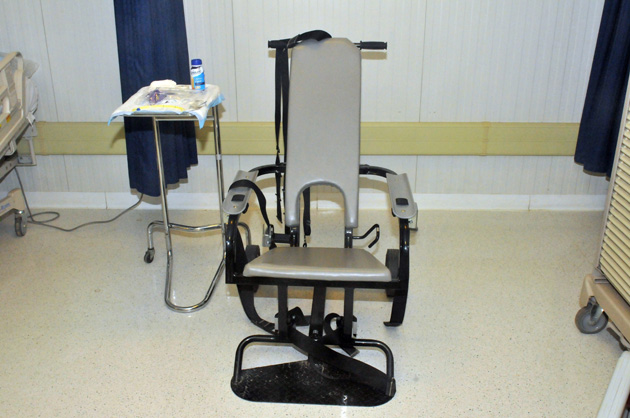
“Internal nourishment preparation inside the Joint Medical Group where the detainees receive medical care.”
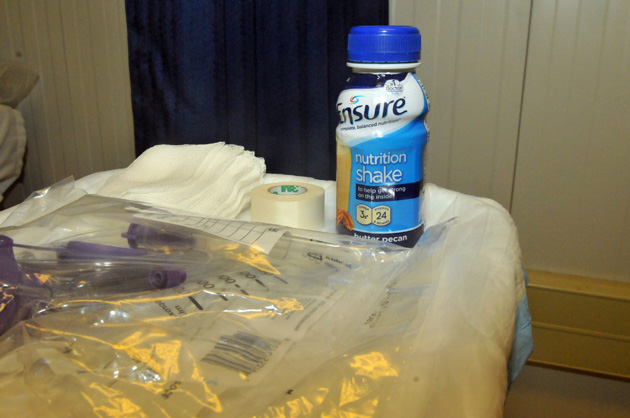
“Overnight medical stay area inside the Joint Medical Group.”
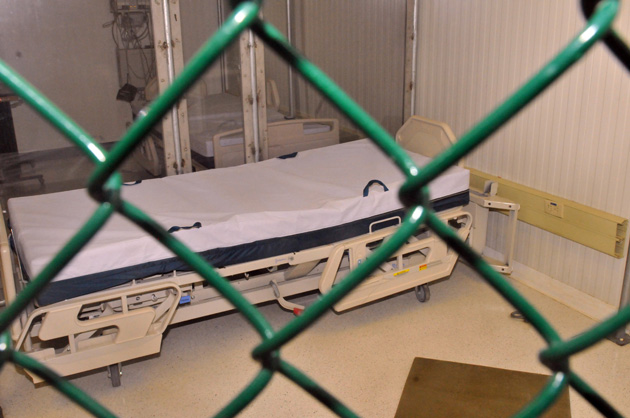
“Shackles restraint point between hospital beds inside the Joint Medical Group.”
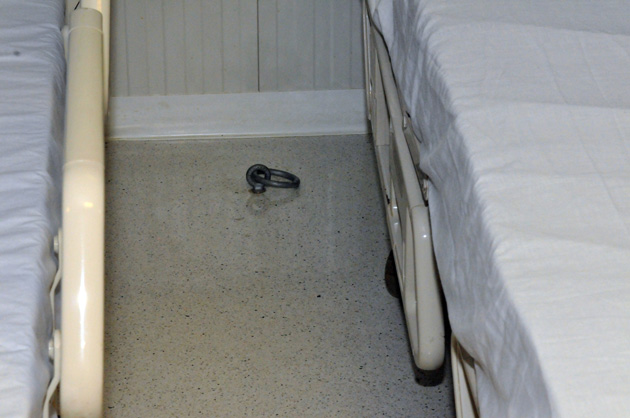
“Guard Force soldiers unload and wheel in food items delivered to Guantanamo Bay Detention Camp V to prepare for breakfast disbursement to detainees.”
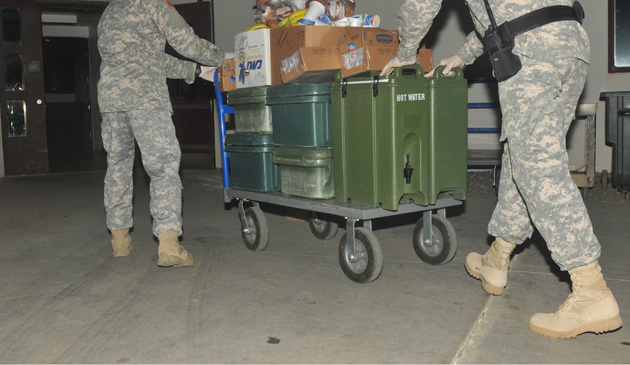
“Dated boxes and marked containers designate items and freshness.”
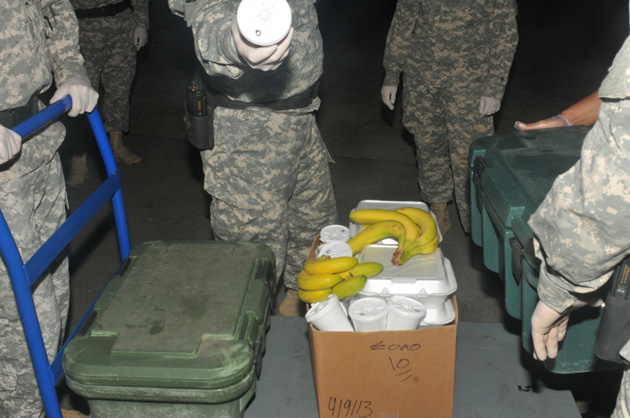
“Fresh olives are part of standard food items delivered.”
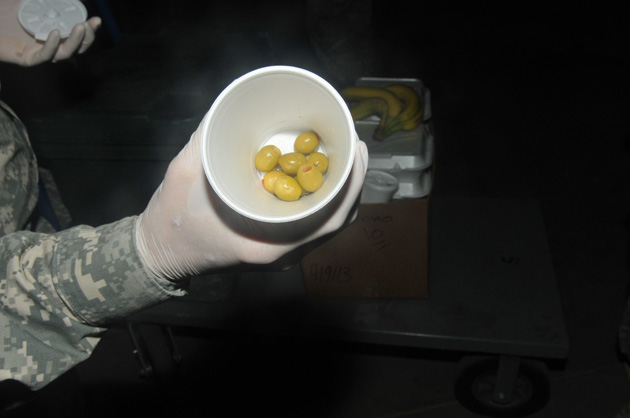
“Guard Force soldier distributes lunch to detainee through a bean hole in Camp V cell.”
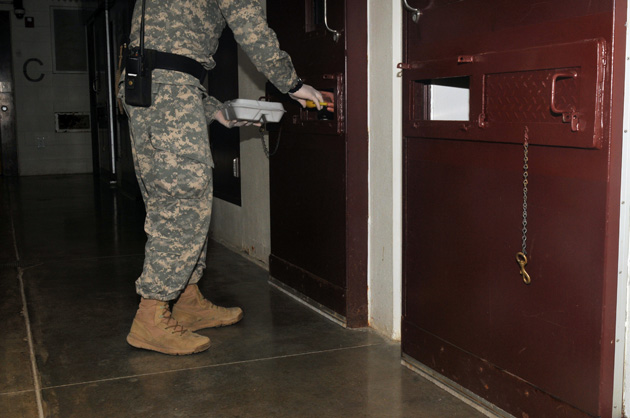
“Guard Force soldier discards breakfast delivered earlier in the morning which was refused by detainees in Camps V and VI.”
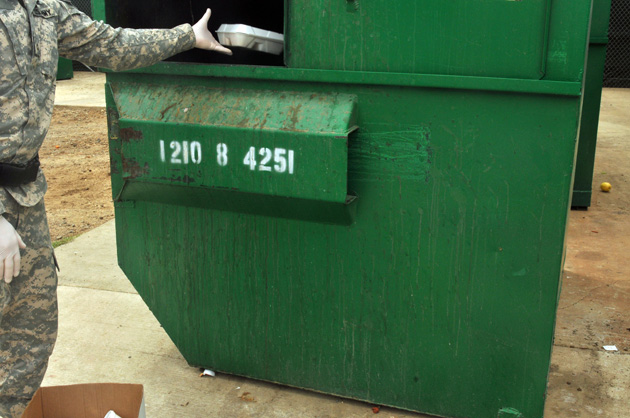
“The Behavioral Health Unit where the detainees receive psychological medical care.”

“Detainees religious rights are respected throughout the detention camps as well as inside the Joint Medical Group.”
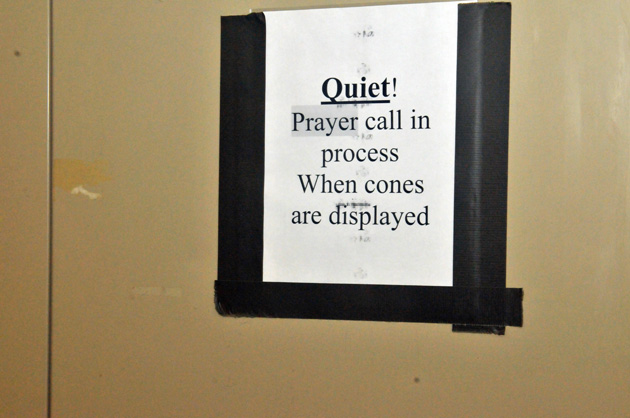
“Standard issued items to restricted detainees inside detention Camp V.”
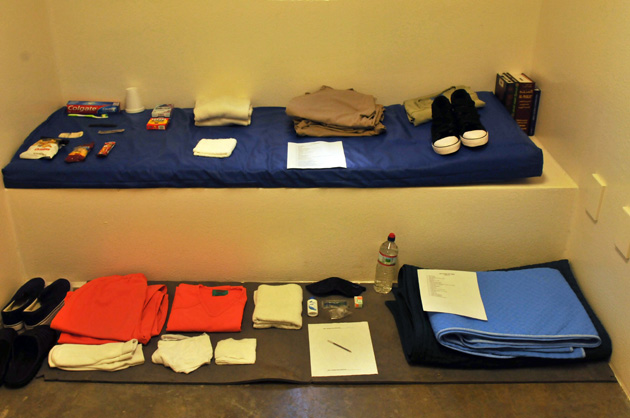
“Media room inside Camp V Detention Facility which provides detainees access to television and movies.”
